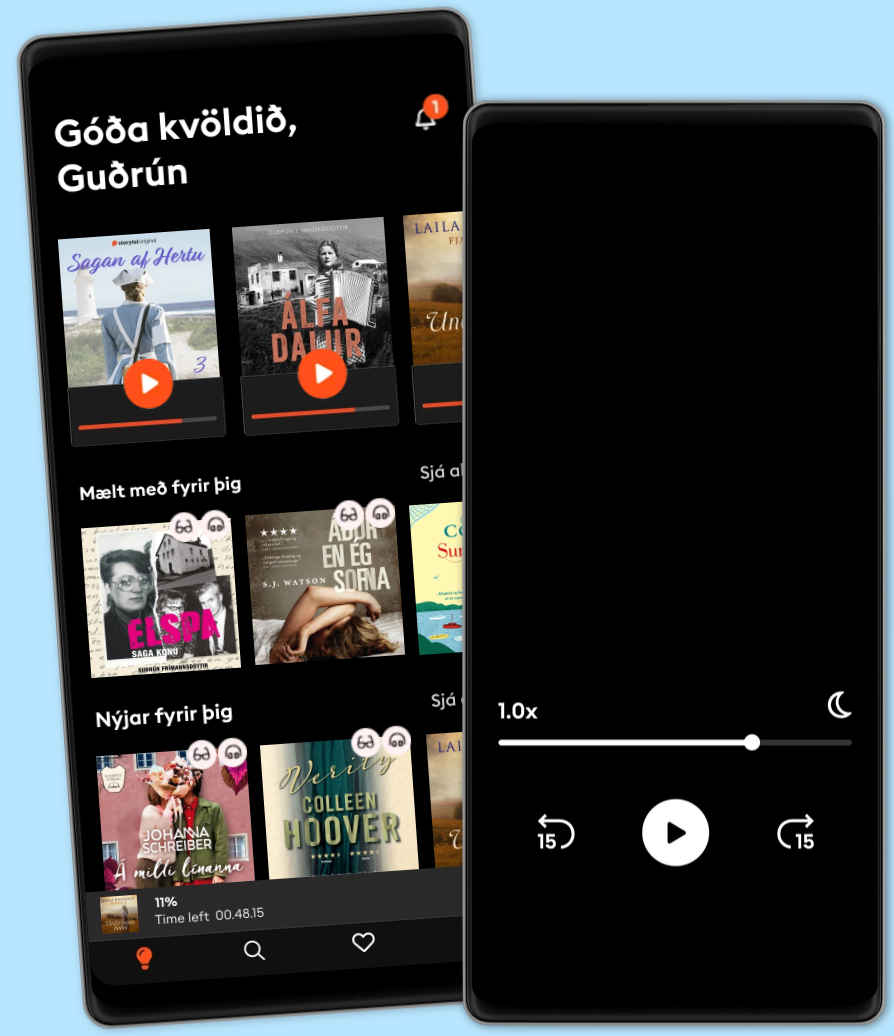Hlustaðu og lestu
Stígðu inn í heim af óteljandi sögum
- Lestu og hlustaðu eins mikið og þú vilt
- Þúsundir titla
- Getur sagt upp hvenær sem er
- Engin skuldbinding
U.S. Presidential Debates: Why We Watch and Why They Matter
- Höfundur
- Lesari
- Útgefandi
- 1 Umsagnir
5
- Lengd
- 56Mín.
- Tungumál
- enska
- Format
- Flokkur
Óskáldað efni
One Day University presents a series of audio lectures recorded in real-time from some of the top minds in the United States. Given by award-winning professors and experts in their field, these recorded lectures dive deep into the worlds of religion, government, literature, and social justice. The quadrennial televised faceoffs are now an established part of presidential campaigns, but they're a relatively recent addition to presidential campaigns. Since John F. Kennedy and Richard M. Nixon participated in the first televised general election debates in 1960, they have changed considerably in format and news coverage. While the responses are short and not much different from what candidates say on the campaign trail, they are the only way to directly compare the candidates. Debates have the potential for gaffes, unrehearsed responses, and dramatic moments that can change a campaign trajectory. Over the years, myths and misunderstandings have developed about the debates: Did Nixon lose because of his makeup? Did George W. Bush have a device that enabled someone to feed him answers? Did Hillary Clinton and Lester Holt have secret hand signals? Professor Diana Carlin has researched the history and evolution of the debates and their impact on voters. In this lecture, she will trace the history of presidential debating from the 19th century to the present, examining the changes and important moments. Through extensive research, she answers questions about their impact on voters and why they are a vital part of a political campaign. This audio lecture includes a supplemental PDF.
© 2021 Dreamscape Media (Hljóðbók): 9781666547818
Útgáfudagur
Hljóðbók: 27 juli 2021
Merki
Aðrir höfðu einnig áhuga á...
- Fight House: Rivalries in the White House from Truman to Trump Tevi Troy, Ph.D.
- Liberty: Natural Rights and the American Constitution Michael Zuckert
- The Rise of the Republican Right: Economic and Social Conservatism Andrew E. Busch
- His Masterly Pen: A Biography of Jefferson the Writer Fred Kaplan
- The American Constitution 101 David Hudson
- History of the Supreme Court Tim Huebner
- Stolen Justice: The Struggle for African American Voting Rights Lawrence Goldstone
- An Exceptional History: The Birth of American Democracy Jeff Webb
- Benjamin Franklin: Made in America Jeff Webb
- Abraham Lincoln and the American Civil War Dan Monroe
- Týnda systirin Lucinda Riley
4.6
- Sálarangist Steindór Ívarsson
4.3
- Snerting Ólafur Jóhann Ólafsson
4.4
- Betlarinn Sofie Sarenbrant
4.3
- Hugrekki til að hafa áhrif Halla Tómasdóttir
4.5
- Þessu lýkur hér Colleen Hoover
4.4
- Valskan Nanna Rögnvaldardóttir
4.6
- Litla bakaríið í Brooklyn Julie Caplin
4
- Gættu þín Helga Birgitta H. Halldórsdóttir
3.6
- Dætur regnbogans Birgitta H. Halldórsdóttir
4.3
- Beiskjusveipur Eppu Nuotio
3.4
- Ég elska þig meira en salt Sjöfn Asare
3.8
- Bústaðurinn við ströndina Sarah Morgan
4.1
- Sporlaust Lotta Luxenburg
4
- Heimkoma Lone Theils
4.3
Íslenska
Ísland
